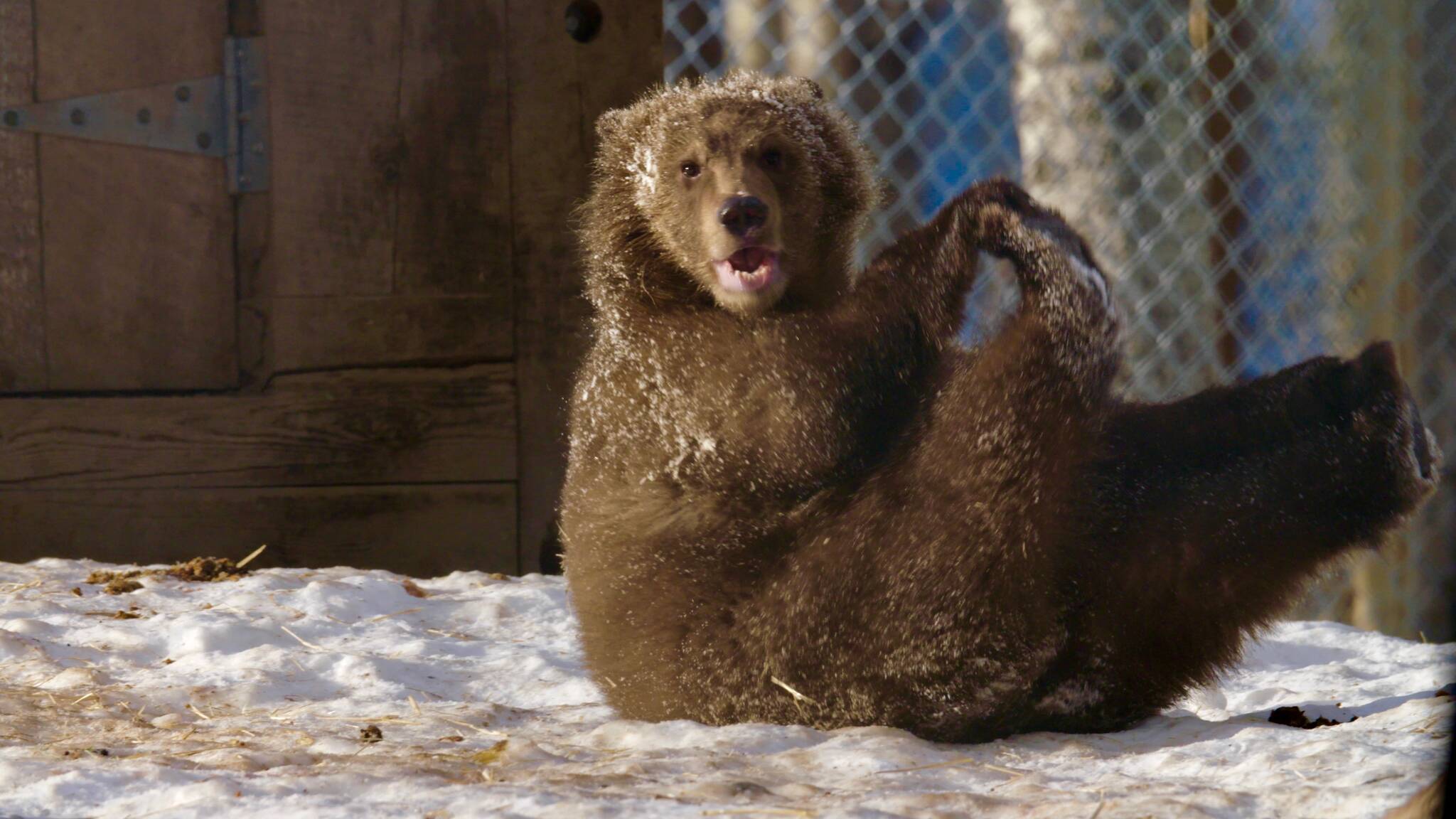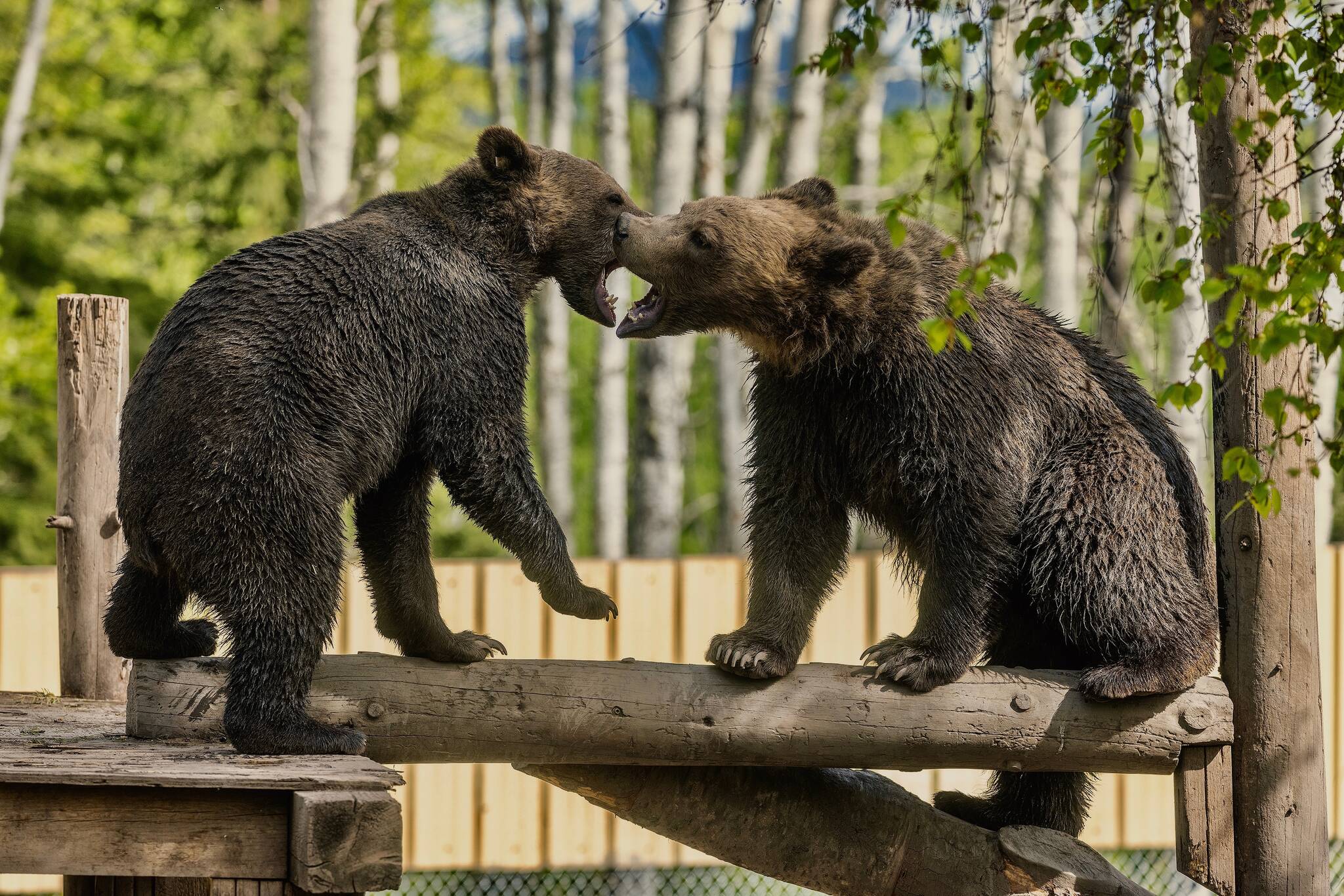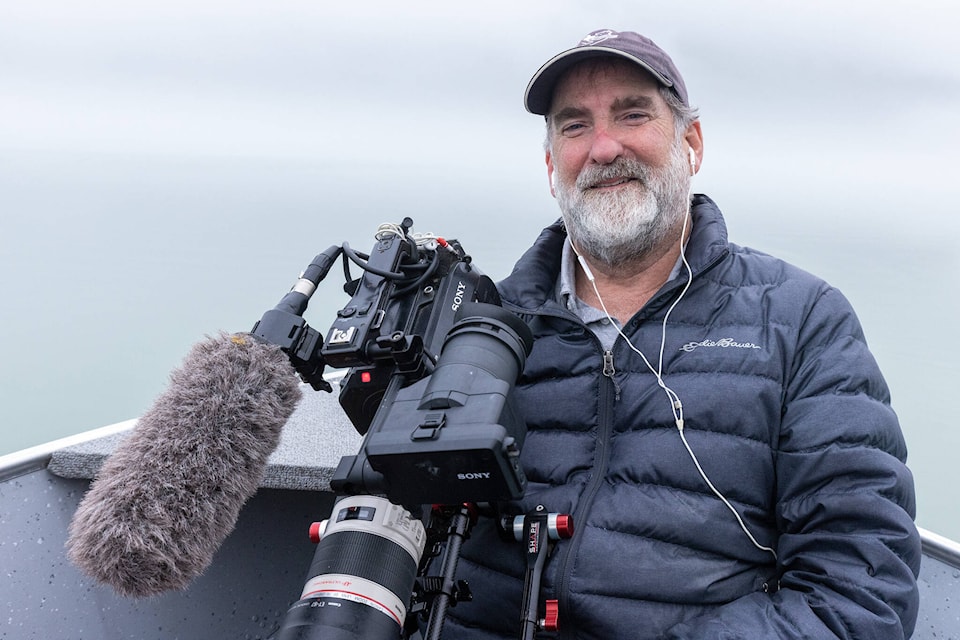A new documentary that debuted last weekend follows a first-time scientific study exploring whether or not orphaned grizzly cubs that have been raised by humans, can survive in the wild.
The short film called Grizzly Rewild follows five cubs that were reared at Northern Lights Wildlife Society in Smithers. This is the only facility in North America that rehabilitates grizzlies.
Writer and director Brad Quenville, along with his son Nick who is the director of photography, follow shelter owner Angelika Langen who has been trying to improve her grizzly cubs’ survival odds by accelerating their growth, and keeping their contact with humans to a minimum.
“My son and I were the main shooters and I was the showrunner of the series Wild Bear Rescue, which was shot at the shelter, that was on Animal Planet,” said Quenville. “And, so we got to know Angelika and the family very well over the three years we were filming that and got to know Smithers really well and loved it there.”
While they were at the shelter, they found out about this new study on the grizzly bears the Langens were releasing.
“So elsewhere, if a grizzly cub becomes orphaned, it’s either left to die or it’s euthanized on the spot or it will go to a zoo,” Quenville said.
He added the team at Northern Lights Wildlife Shelter believes orphaned grizzly cubs could potentially help rebuild North America’s threatened grizzly populations and they were able to catch some of their groundbreaking work in Grizzly Rewild.
“Angelika and her husband Peter were like it’s crazy that this is the only place in North America that does this, there’s all these threatened grizzly bear populations across North America, why can’t we get this adopted elsewhere? Well, they needed proof that it was working, that the grizzly bears, they were releasing, were surviving.”
The Langens connected with an organization called the Grizzly Bear Foundation to help fund a new study, which is being done by a woman named Dr. Lana Ciarniello, a scientist who’s been studying bears for 30 years. Together, they’re working on a long-term study on whether the bears that are released survive.
Northern Lights Society has been rewilding grizzly bears since 2007 and has released about 35.
Angelika Langen was excited about the opportunity to shed some light on the work they are doing.
“We just wanted to really put it out there that there are management options,” she said. “Often grizzly bear cubs, they’re looking for a place in the zoo, a sanctuary. But those places are harder and harder to come by. And then usually what ends up happening is that they get euthanized. And given that grizzly populations are in many areas… not in the best of states, we feel that there are other options. And we just wanted to make sure that the general public and everybody else is aware of these options.”
Langen said it is hard to gauge how well the grizzly bears do after they are released because mother grizzly bears lose about half of their cubs, so they expect about the same numbers. Of the five bears that the documentary follows, two are still hibernating for their second winter. But she said it is still worth it to try.
“We were totally prepared to lose half of them. We did lose more. But one of them was due to an accident during the release,” she added. “And it’s just tough. You want them all to succeed.”
While they are saving bears, they are also hoping to change the way people view the bears and save more bears in the future.
“We’re grateful that we can do these studies,” she added. “We’re grateful that we have Lana Ciarniello as a researcher on there. She has a lot of experience and is involved with them. Not only here in Canada, but globally. And that brings a really good set of knowledge into the study, makes it more real. And the questions that we’re exploring are important. And she makes sure that they’re covered.”
Quenville explained that they were only allowed to film the bears when they were distracted and had to back away if the bears noticed them.
“It gets quite exciting because you look at the behaviours that start to unfold even within the enclosure,” he said. “There was a bear named Cedar that was this incredibly intelligent bear. We watched it sitting in this pond and it would reach down into the muddy waters and pick up big stones and then heaving it into the air and just watching it splash and then she’d go over and find it again, lift it up, throw in the air, watch it splash.
“And one occasion we’ve got her filmed where she picked up a coconut stood on her hind legs and tossed it like a baseball and then ran after it and while she was on all fours and lifted with her two front feet, lifted up this coconut throw it again, and then the other bears started to follow and it was like this bear is entertaining itself.”
Quenville hopes that after people watch this documentary they learn more about grizzly bears.
“Grizzly bears are awesome,” he said. “They are not these marauding demons that a lot of people imagine them to be. They’re worth protecting.”
The Nature of Things, Grizzly Rewild debuted on Friday, March 3 at 9 p.m. (9:30 NL) on CBC TV and CBC Gem.
marisca.bakker@interior-news.com
Like us on and follow us on .





